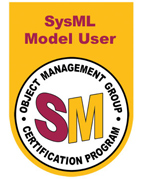
Program Planning
Mid and long range planning (5-10 years) is an essential part of the resource planning within Agencies and Corporations. Creating a portfolio of projects that are to be deployed over the next 5-10 years requires a high level of stakeholder involvement, analysis, and continuous communications. Stakeholder involvement is essential to capture needs, gaps, and expectations. ASE provides consulting services for the analysis required to sequence the projects over time so that the highest value and most cost-effective projects get implemented first. Finally, the continuous communications are critical to reassess the portfolio each year as needs change, gaps, and expectations change.
Project Management
Project management is by definition required on all project endeavors. The Project Management Institute (PMI) has been the organizations that most companies and agencies look to for project management knowledge. Sometimes issue rise on the relationship of Project Management and Systems Engineering, this overlap and relationship are dynamic, and ASE provides consulting services and training as support to tailor this relationship for the organization and for specific activities such as risk management, configuration management, technical reviews, and decision gates to name a few.
System Integration
Most systems require integration with internal legacy elements or with external systems and often these legacy interfaces are undocumented, or the documentation is outdated. ASE provides consulting services to identify the interfaces, set up a management process for interfaces or if needed reverse engineering interfaces to integrate systems.
Concept Development

Systems Engineering Planning
ASE provides consulting on Systems Engineering Planning. Systems Engineering Planning is one of four pillars of systems engineering activities for development along with Concept of Operations, Requirements Engineering and Verification and Validation, the Systems Engineering Planning provides a description of the Systems Engineering processes used and tailoring guidance for a project.
Concept of Operations
The Concept of Operations establishes the context for understanding the system requirements. ASE provides consulting and training on developing a concept of operations. The Concept of Operations describes how the current (AS-IS) or the future (TO-BE) system operates or is envisioned to operate. When replacing an existing system, the AS-IS, and TO-BE, it is important to identify the gaps in operations that need to be developed for the TO-BE system. The TO-BE is the envisioned system this is like “Starting at the Finish line.” A critical section in a concept of operations is the operational scenarios that illustrate how a function is to be performed.
Requirements Engineering

Verification and Validation
After implementation, the system it is verified by the project stakeholders. Verification is the process by which the stakeholder gives proof that the delivered system meets the requirements specified in the contract through demonstration, inspections, test, or analysis. ASE provides consulting in the development of verification plans, audits the verification procedures, and the verification of the system. Validation is performed by the Agency; proving that the system meets the stakeholder needs. The development team may or may not be involved with validation. ASE provides consulting in support of Validation planning and conducting validation.
Other
The ASE consulting services identified above are just some of the major areas in systems engineering that ASE has performed consulting services for. If you are interested in additional services, please feel free to call us and we can discuss the area.
Next Steps...
Get in Touch with ASE to learn more about systems engineering consulting.

